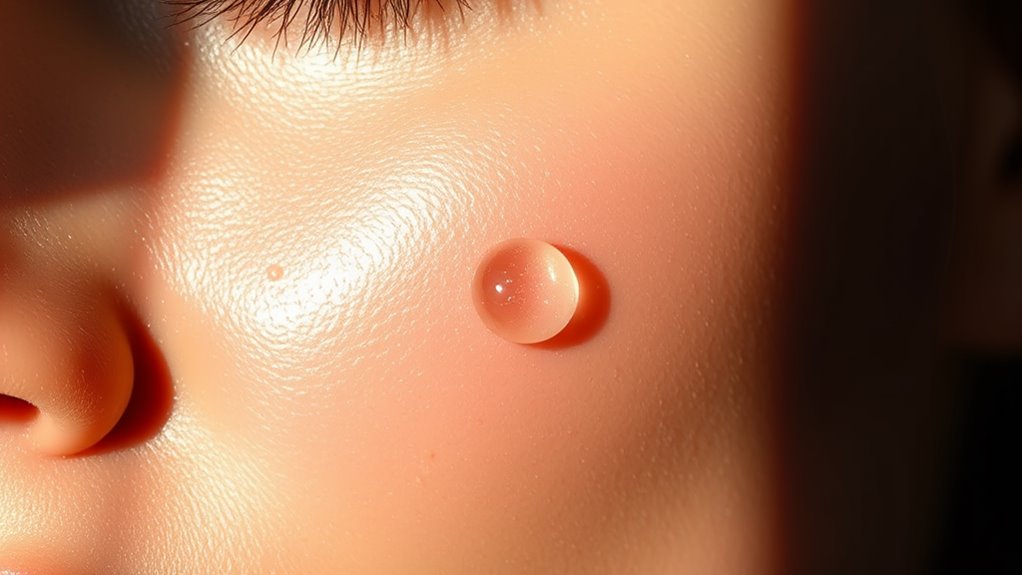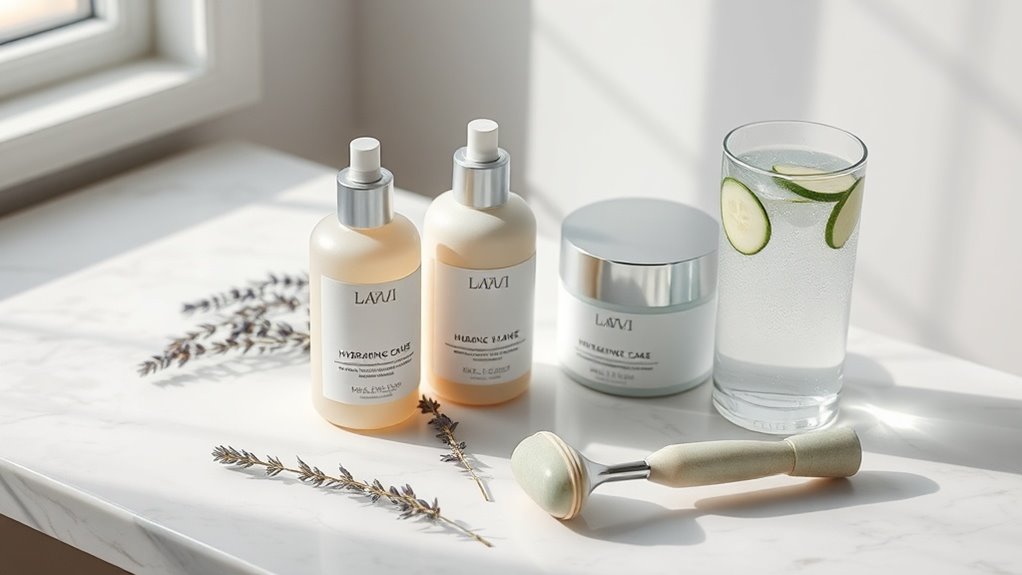How to Tell If Your Skin Is Dehydrated – Even If It’s Oily
It’s a common misconception that oily skin can’t be dehydrated. In fact, your skin might lack water even if it produces excess oil. This condition can lead to various issues, such as dullness and uneven texture. Understanding how to identify signs of dehydration is crucial for maintaining a healthy complexion. So, how can you assess your skin’s hydration levels effectively? Let’s explore the key indicators and solutions for restoring balance.
Key Takeaways
- Look for signs of tightness or dullness, even in oily skin, indicating moisture deficiency.
- Perform a pinch test; if your skin slowly bounces back, it may be dehydrated.
- Notice any flakiness or rough texture, which are common symptoms of dehydrated skin.
- Experience increased sensitivity or irritation after cleansing, signaling low hydration levels.
- If products absorb quickly without providing moisture, your skin might be dehydrated despite excess oil.
Understanding Skin Dehydration
Have you ever wondered why your skin feels tight or appears dull? These are common signs of skin dehydration, a condition where your skin lacks sufficient moisture.
Tightness and dullness are key indicators of skin dehydration, signaling a need for more moisture.
Dehydration can result from various factors, including environmental conditions, inadequate hydration, and certain skincare products.
When your skin’s barrier is compromised, it loses water, leading to a loss of elasticity and a rough texture.
You might also notice increased sensitivity or flaky patches.
Recognizing these signs early is crucial for proper treatment, allowing you to restore moisture levels and maintain healthy skin. Additionally, using products that support skin barrier function can significantly help in retaining moisture and improving overall skin health.
Stay vigilant, and listen to your skin’s needs for optimal hydration.
Signs of Dehydrated Skin in Oily Types
While oily skin may seem impervious to dehydration, it can still exhibit signs that indicate a lack of moisture.
You might notice dullness or a rough texture, as dehydration affects your skin’s ability to reflect light.
Tightness or discomfort, especially after cleansing, is another warning sign.
You may also experience increased sensitivity, leading to redness or irritation.
Additionally, you could find that your skin produces excess oil as a compensatory mechanism, creating a paradoxical feeling of both oiliness and dryness.
Observing these signs can help you address dehydration effectively, even in oily skin types. Remember that moisturizing oily skin is crucial to maintaining a balanced complexion.
The Difference Between Dehydration and Oiliness
Understanding the difference between dehydration and oiliness is vital for effective skin care. Dehydration refers to a lack of water in the skin, while oiliness indicates excess sebum production. Both can occur simultaneously, complicating your skin care routine. Additionally, factors such as hidden causes of dry skin can exacerbate dehydration, making it essential to address these underlying issues.
| Feature | Dehydration |
|——————|———————————-|
| Cause | Insufficient water content |
| Appearance | Dull, tight, and flaky skin |
| Treatment | Hydrating products and water intake |
| Feature | Oiliness |
|——————|———————————-|
| Cause | Overproduction of sebum |
| Appearance | Shiny, greasy skin |
| Treatment | Oil-free products and exfoliation
How to Assess Your Skin’s Hydration Levels
How can you accurately assess your skin’s hydration levels?
Start by examining your skin’s texture. If you notice flakiness or a rough feel, it may indicate dehydration.
Examine your skin’s texture; flakiness or roughness can signal dehydration.
Next, perform the pinch test: gently pinch the skin on the back of your hand; if it doesn’t bounce back quickly, your skin might be dehydrated.
Additionally, pay attention to tightness after cleansing; if your skin feels taut or uncomfortable, it’s a sign of low hydration.
Finally, observe how your skin reacts to products; if they absorb too quickly without providing moisture, your hydration levels are likely insufficient. Furthermore, consider that environmental factors such as low humidity or harsh weather can exacerbate dehydration and lead to dry skin patches.
Tips for Rehydrating Oily Skin
After assessing your skin’s hydration levels, you may find that oily skin can still suffer from dehydration.
To rehydrate effectively, incorporate a lightweight, oil-free moisturizer containing hyaluronic acid or glycerin, which attract moisture.
Avoid harsh cleansers; instead, use gentle, hydrating formulas that maintain your skin barrier. Gentle cleansing is essential for hydration without over-drying your skin.
Consider incorporating a hydrating serum into your routine for an extra boost.
Additionally, drink plenty of water to hydrate from within.
Lastly, avoid long, hot showers that can strip moisture.
Regularly exfoliating can help enhance product absorption, but do so gently to prevent irritation.
Consistency is key for optimal skin hydration.




